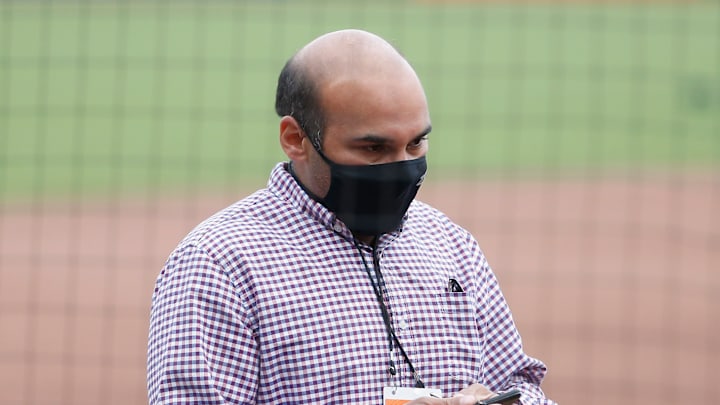Can Randy Rodriguez Work In A Starter Role?
It came as a surprise when Zaidi made the remark that Rodriguez could be stretched out in a rotation role next season. In the 58 pitching appearances that he had done throughout his whole career, he only started twice in 2018 in the DSL. If he ever starts next season, it will be the first time in more than three years that has happened.
In order for Rodriguez to be viable in a rotation role, or any pitcher for that matter, he has to have a third pitch. Not just a show-me pitch, but a pitch that can either induce whiffs or weak contact. In Rodriguez's case, it is a changeup. His changeup is a two-seam circle changeup that he primarily throws against lefties early in the count to give hitters a different look from the usual fastball-slider combination. He did not throw the pitch a lot early in the season but his confidence kept growing and growing as the season progressed and he even features it in two-strike counts. The pitch does not have a big velocity difference compared to his fastball but it does flash late two-seam movement.
Good morning/afternoon/evening. Working on a Randy Rodriguez piece for @RoundTheFoghorn. Here are a few of his changeups. If the Giants do want to stretch him out in the rotation, it is a viable pitch. pic.twitter.com/dS2v2thDDT
— Giant Prospective (@giantprospectiv) December 17, 2021
If you can get Robert Hassell III to swing in front like what he did in the video, you know it's a viable third pitch. With Rodriguez working out in two or three-inning stints and only facing the lineup once, going full send is not an issue. However, if Rodriguez is to be stretched out, the 94-98 MPH range that he lived with in the bullpen would tick down to likely 92-96 MPH. He could still sprinkle a couple of 98 MPH heaters early in his outings, but he would likely sit in the low-to-mid 90s.
Rodriguez's stuff should not be an issue. There is a reason why his strikeout rate never dipped below 25% after all. He also has had a solid record of strike-throwing this season. His walk rate was not pretty in the AZL a couple of years ago but he's shown this season that he can spot his pitches whenever needed. The only issue that could hinder Rodriguez's stint in the rotation is the violence in his arm action. Rodriguez is a great athlete but the way he loads his rotator cuff is extreme. That gives him the relief-ish vibes and even though I think that Rodriguez will pitch in relief in the big leagues eventually, I would not discount the possibility that he will be a good Minor League starter because of his athleticism and strike-throwing.
